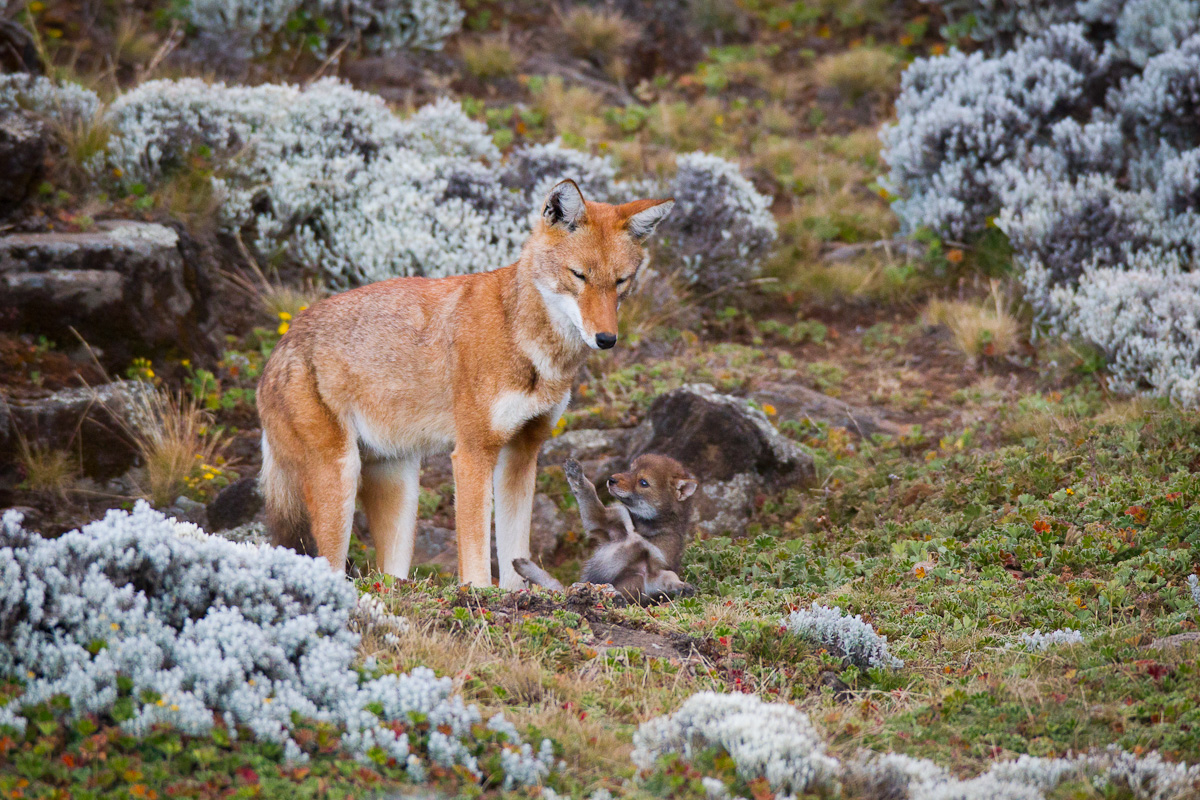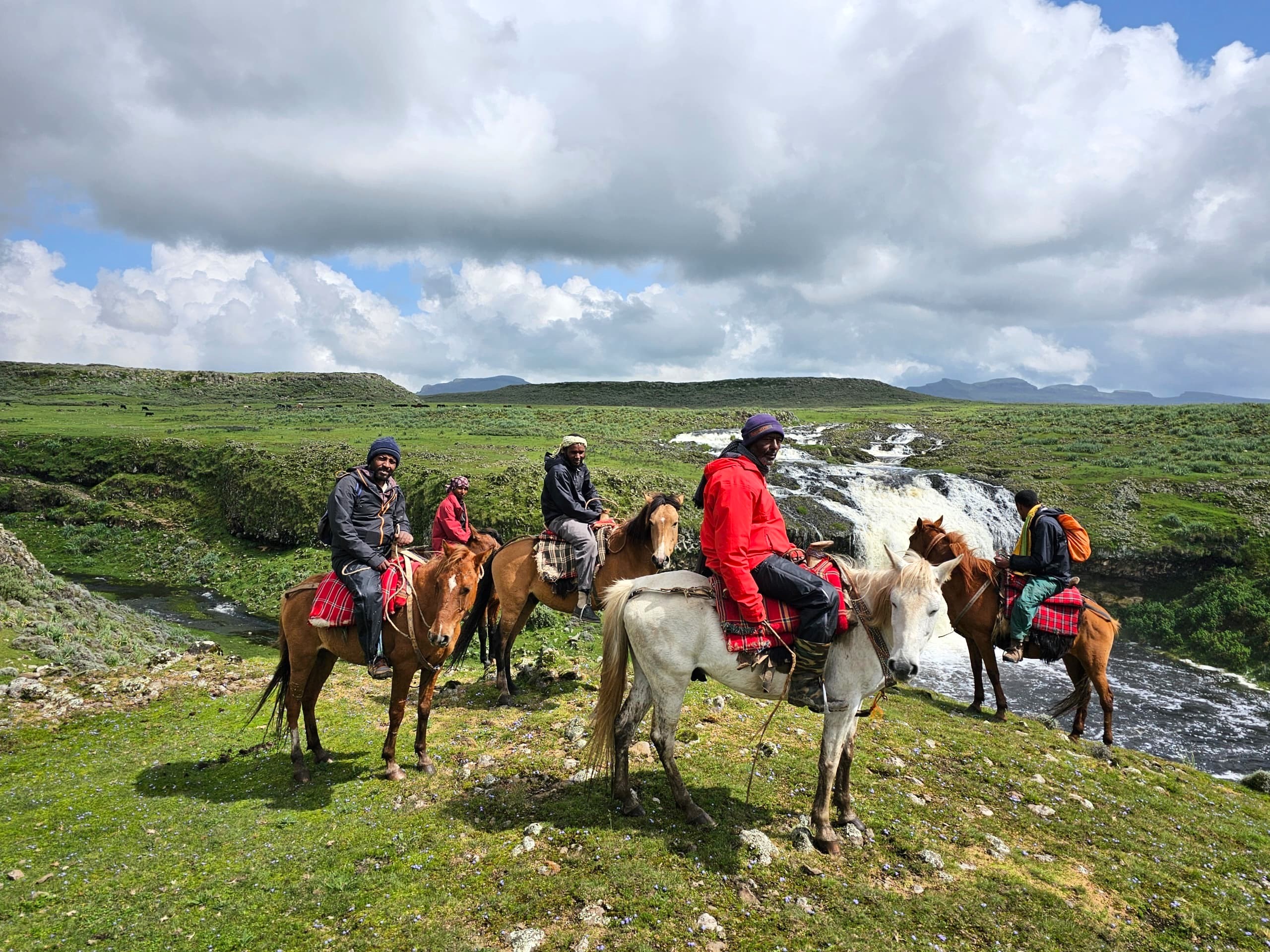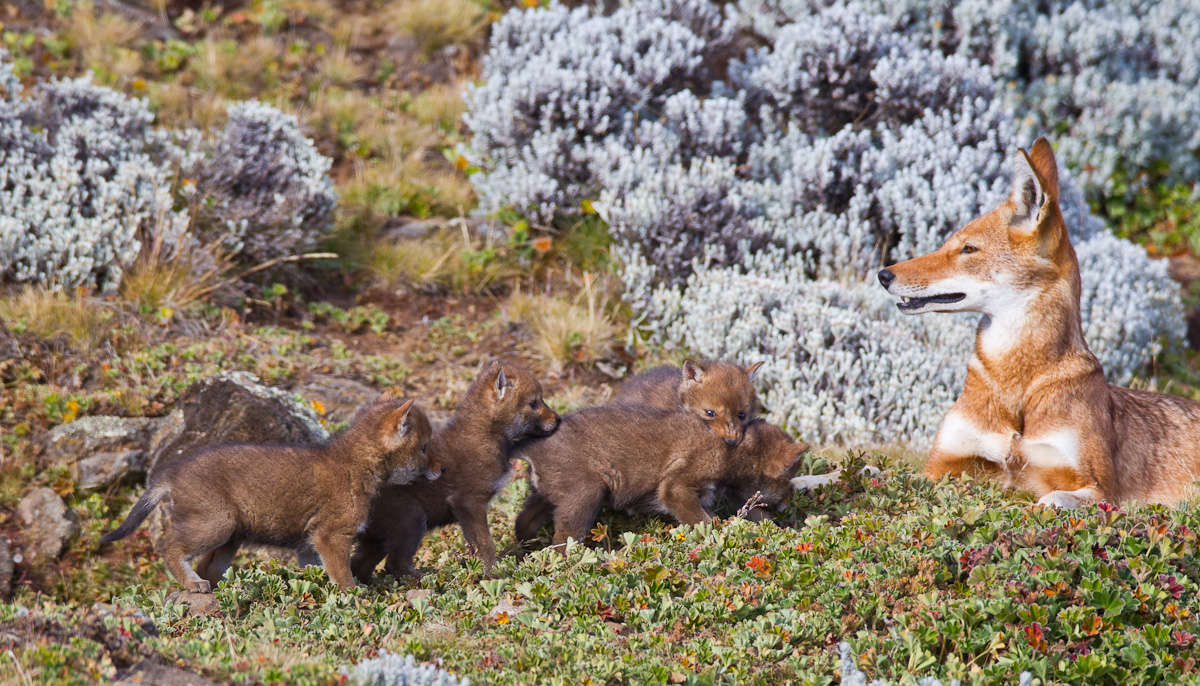


The monitoring of Ethiopian wolf packs is the backbone of EWCP’s long-term conservation work. With in-person observations from our skilled monitoring teams, our aim is to detect changes in the status and threats to Ethiopian wolf populations. From gathering data on pack composition and breeding success, to sounding early warnings about disease and human-wildlife conflict, this information allows us to develop evidence-based solutions to current and emerging conservation challenges.
Last year, from April 2024 to March 2025, EWCP monitored 41 separate wolf packs in 17 different locations across 6 populations. We gathered a staggering 8,900 observations of wolves during a mammoth 10,400 monitor-hours of fieldwork. In rain and sun, high winds and freezing temperatures, wolf monitoring is a labour of love for these iconic animals. A truly impressive undertaking!

EWCP Wolf Monitors in Web Valley, the Bale Mountains. ©Abdi Samune
The breeding season this year brought notable changes in pack dynamics and territories, particularly in the Bale Mountains. In the Web Valley, we witnessed a significant shift as two new packs emerged from the large and well-established McKenna pack, each claiming territories previously held by the smaller Habele and Gata packs. Similarly, on the Sanetti Plateau, a new pack separated from the core BBC pack, adding another pack in this critical wolf population.
Despite these territorial shifts, breeding success in the Bale Mountains was moderately positive. A total of 52 pups were recorded across 14 packs within the Web Valley, Sanetti, and Morobawa East regions. Encouragingly, 37 pups survived through the end of the breeding season, demonstrating the resilience and adaptive capacity of these wolf packs in the face of environmental pressures.

A litter of Ethiopian wolf pups recently emerged from the den. ©Rebecca Jackrel
The breeding season in the Simien Mountains brought encouraging news, as small litters were observed in 3 out of 5 focal packs. This is a significant improvement compared to the previous year when no pups were found in any of the Simien packs. This positive development highlights the effectiveness of ongoing conservation efforts and the importance of sustained monitoring and adaptive management to support reproductive success.
Unfortunately, regular monitoring in other wolf populations, including Abuna Yosef, Menz-Guassa, and Wollo, was hindered by armed conflict in the highlands. As a result, we gathered limited data from these regions. Nevertheless, we recorded another noteworthy pack split in Menz-Guassa, where the Beri Ginbar pack divided into two new groups, both of which successfully produced litters of 3 pups. This highlights the ongoing dynamic nature of wolf social structures, even in less frequently monitored populations.
Wolf monitoring remains at the forefront of our work to protect this spectacular species from extinction. Up-to-date population estimates and early detection of threats are vital for swift and effective conservation action. Whilst the work is never done, the birth of a new generation of Ethiopian wolves is always a moment to take stock - with renewed hope for the future.
Two Ethiopian wolf pups sighted in the Simien mountains. ©Getachew Assefa